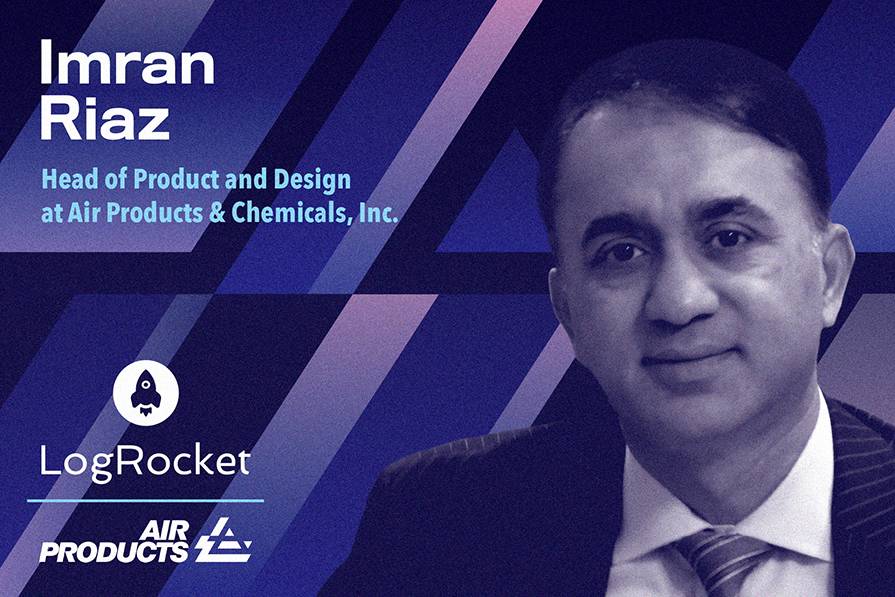Product Management News
Medium
145

Airbnb’s Trust-Driven Marketplace: How a Shared Economy Built a $100 Billion Travel Giant
- Airbnb, founded in 2008, succeeded in making travel feel local with its trust-driven marketplace, generating 150 million annual bookings by 2025.
- Airbnb's trust engine, including user ratings and AI-driven safety, plays a key role in driving engagement among users.
- The integration of AI in Airbnb's platform not only enhances safety but also personalizes user experiences, driving conversions through features like search ranking and dynamic pricing.
- For PMs looking to create trust-driven platforms like Airbnb, a six-step framework is provided emphasizing the importance of integrating tools like Trustpilot and maintaining vigilance to address challenges and risks.
Read Full Article
8 Likes
Medium
157
Image Credit: Medium
3D Product Rendering Studio in Karachi for Realistic Visuals
- 3D product rendering offers hyper-realistic, customizable visuals without physical prototypes, aiding in better storytelling and engagement.
- Demand for product rendering services is on the rise, with businesses seeking innovative studios like the one in Karachi for high-impact imagery.
- The process of 3D rendering involves creating digital product representations, enabling flexibility, virtual prototyping, and cost-effective decision-making.
- Traditional photography and 3D rendering have distinct advantages; the studio offers various services tailored to different business needs.
Read Full Article
9 Likes
Medium
229

Image Credit: Medium
How to Market Yourself as an AI Product Manager (Even If You’re Not One Yet)
- To market yourself as an AI Product Manager, reposition your past product work through an AI lens.
- Focus on understanding AI concepts, terminology, and industry trends without needing deep technical knowledge.
- Update your resume and online profiles to reflect AI-relevant experience and keywords.
- Engage with AI-related content, share insights, and look for transitional roles where AI is a layer, not the core product.
Read Full Article
13 Likes
Medium
453

Image Credit: Medium
How to Work Like a Product Manager in a Project-Driven Organization
- To work like a product manager in a project-driven organization, focus on mindset shifts and daily practices.
- Redirect conversations towards outcomes to gain better understanding and trust from stakeholders.
- Define product vision, strategy, success metrics, and objectives to guide an outcome-oriented product roadmap.
- Shift focus from scope and requirements to desired outcomes to improve product development initiatives.
Read Full Article
26 Likes
Discover more
- Programming News
- Software News
- Web Design
- Devops News
- Open Source News
- Databases
- Cloud News
- Operating Systems News
- Agile Methodology News
- Computer Engineering
- Startup News
- Cryptocurrency News
- Technology News
- Blockchain News
- Data Science News
- AR News
- Apple News
- Cyber Security News
- Leadership News
- Gaming News
- Automobiles News
Medium
324

Image Credit: Medium
Todd Kassal Illinois: Innovating at the Crossroads of Quantum Computing and Rubber Track Product…
- Todd Kassal Illinois excels in both Quantum Computing and Rubber Track Product Management, showcasing interdisciplinary expertise in driving innovation and problem-solving.
- As a Quantum Computing Specialist, he develops algorithms and applications for real-world industries, leveraging quantum advantages for sectors like finance, logistics, and cybersecurity.
- In Rubber Track Product Management, Kassal focuses on design innovation, materials selection, and manufacturing optimization to enhance track performance and durability in construction, agriculture, and defense sectors.
- His ability to apply quantum computing concepts to industrial challenges drives smarter manufacturing processes, leading to superior products and showcasing the benefits of cross-disciplinary expertise.
Read Full Article
19 Likes
Medium
72

Image Credit: Medium
ADEPT: The Product Discovery Framework that Fits on a Sticky Note
- ADEPT is a lightweight product discovery framework designed to identify problems with early-stage product and process ideas, focusing on what is known, unknown, and where to prioritize.
- Unlike other discovery frameworks that require extensive documentation, ADEPT can be quickly completed on a sticky note in a few minutes once understood.
- The emphasis on evidence in ADEPT helps combat biases and directs attention to factual knowledge behind conclusions, aiding in decision-making.
- ADEPT factors include Attractiveness, Doability, Effectiveness, Practicality, and Targetability, guiding the evaluation of ideas based on different criteria.
- Alex applied ADEPT to a product dashboard idea, which uncovered the need for real-time performance tracking, leading to a shift in focus and increased interest from product teams.
- By addressing knowledge gaps in each ADEPT factor, teams can identify a discovery path that makes sense for specific ideas and make progress by updating assessments.
- Through assessing attractiveness, doability, effectiveness, practicality, and targetability, Alex transformed hunches into evidence-based decisions, ultimately gaining support for the idea.
- Discovery is about risk management and reaching a comfortable level of risk before progressing, with ADEPT helping to expose unknowns for informed decision-making.
- Utilizing varying levels of evidence in ADEPT, from anecdotal to statistical, allows for a structured approach to evaluating ideas based on the quality and reliability of information.
- Discovery serves as risk insurance, reducing the likelihood of building unsuccessful solutions by investing time and resources upfront to minimize potential losses from failed initiatives.
- While aiming for informed decisions, it's acceptable to proceed with educated guesses when risks are low and more evidence is sought when significant resources are involved.
Read Full Article
4 Likes
Medium
256

Image Credit: Medium
Project Management Skills Applied to Your Life
- A simple four-step system has been discovered that transforms how you approach your goals, time, and priorities, based on project management principles.
- Before taking action, clarify what success means in different areas of your life by mapping out visions on post-it notes.
- Identify key initiatives that will help you reach your goals and track them consistently using a basic spreadsheet or similar tool.
- Review and plan your upcoming week around key initiatives, scheduling specific time blocks for them to ensure progress and adapt the system as necessary to stay on track.
Read Full Article
15 Likes
Medium
144

The Ultimate Guide to Mastering the Role of a Product Manager: Insights and Strategies for Success
- Product management is crucial for delivering products that exceed customer expectations by aligning various teams towards a common goal.
- Product management has evolved to emphasize strategic oversight and customer-centric development.
- Creating and maintaining a product roadmap is essential for guiding product development and aligning stakeholders.
- Market research, competitive analysis, and customer feedback drive data-driven decisions to ensure product success.
Read Full Article
8 Likes
Medium
430

Image Credit: Medium
Code ≠ Value ! The problems with measuring GenAI Productivity
- The 2024 DORA report shows a correlation between AI adoption and a drop in throughput and stability in software development.
- Traditional metrics focusing on velocity or output alone may sacrifice quality, security, and maintainability in AI-generated code.
- AI can help in speeding up development processes, but it also requires developers to validate and debug AI-generated code, shifting cognitive load.
- Not all developers benefit equally from AI assistance, and the cultural impact of misaligned metrics can damage morale within development teams.
Read Full Article
17 Likes
Logrocket
175

Image Credit: Logrocket
Leader Spotlight: Driving a mindset shift in legacy organizations, with Imran Riaz
- Imran Riaz, Head of Product and Design at Air Products, discusses driving mindset shifts in legacy organizations from output-based to outcome-based approaches.
- Key challenges include the engineering-centric and output-focused nature of legacy organizations, where rallying around customer centricity is crucial.
- Imran emphasizes creating partnerships and champions within the organization to shift mindsets and deliver early wins.
- At Air Products, a strategic approach was taken to introduce product and UX practices, focusing on building a center of excellence and delivering best practices.
- Imran emphasizes defining vision, strategies, and partnership with businesses in establishing good product management and effective UX.
- A multi-tiered strategy was deployed at Air Products to upskill existing teams, run pilot projects, and embed product management and design into existing processes.
- Imran advocates for a partnership model between PMs, UX designers, and the business, focusing on understanding customer pain points and delivering value.
- Driving business value is measured through product- and initiative-based OKRs aligned with outcomes like customer retention and revenue improvements.
- Governance structures and processes, such as COEs, playbooks, and prioritization, are vital for systematic implementation of PM and UX functions.
- Tools like design systems, outcome-based roadmaps, and the right team with skills are prioritized for scalability and effectiveness of product and design functions over time.
Read Full Article
10 Likes
Medium
423

Image Credit: Medium
Focusing on outcomes over outputs
- Bank XYZ aimed to increase customer engagement and simplify payments by introducing QR code payments.
- After expanding the QR code payment system to new regions, low adoption rates and complaints arose due to poor mobile network connectivity.
- Lessons learned: Understanding customer needs, testing assumptions early, collecting continuous feedback, and focusing on delivering real value lead to meaningful outcomes.
- Product teams are encouraged to shift focus from outputs to outcomes, ensuring that the products they build make a real difference for customers.
Read Full Article
25 Likes
Medium
58

Image Credit: Medium
The Curious Case of Amazon Halo: How Big Tech Fumbled in the Health Game
- Amazon's ambitious health tracker, the Halo Band, failed to resonate with consumers due to issues with tone analysis accuracy, privacy concerns, lack of screen and limited features.
- The product aimed to measure emotions, body fat, and well-being, but faced criticism for misinterpreting tones, requesting semi nude selfies for body scans, and locking key features behind a subscription paywall.
- Amazon struggled to define its target audience, leading to a disconnect with both fitness enthusiasts and casual users, ultimately resulting in the discontinuation of the entire Halo product line in less than three years.
- The failure of the Halo Band underscores the importance of empathy, clarity, and user feedback in health tech innovation, highlighting the significance of building trust and meeting user needs in product development.
Read Full Article
3 Likes
Medium
18

Product-Led Growth (PLG): Let Your Product Do the Talking!
- Product-Led Growth (PLG) is a business strategy that focuses on the product as the main driver for customer acquisition, retention, and expansion.
- PLG involves offering a free version or trial of the product to allow users to experience its value, leading to increased adoption and advocacy.
- In today's empowered digital customer landscape, PLG resonates by prioritizing intuitive, valuable, and user-friendly product experiences over traditional marketing tactics.
- PLG aims to build products so compelling that they essentially sell themselves, fostering a genuine connection with users and driving sustainable growth.
Read Full Article
1 Like
Medium
243

Image Credit: Medium
How Choice Paralysis is Costing Netflix $2.8B Annually and the Simple UX Changes That Could Fix It
- Choice paralysis on Netflix due to overwhelming content options can lead to users abandoning sessions during vulnerable mental health moments.
- The author shares a personal experience of feeling emotionally drained and struggling to find comforting content, highlighting the larger market failure affecting vulnerable users.
- Calculations show that Netflix loses $2.8 billion annually due to users abandoning sessions because of choice paralysis under mental health conditions.
- Neurodivergent + Mental Health conditions amplify the overwhelming effect of too many options on platforms like Netflix.
- Proposed product changes include an emotional check-in feature, 'Comfort Mode' for distressed users, and a framework for emotional intelligence in content curation.
- Netflix could lead by focusing on cognitive accessibility, emotional impact metrics, and user habit formation instead of solely optimizing for browsing time and content volume.
- Building emotionally intelligent products in tech can support users in vulnerable mental health states and create more compassionate experiences for all.
- The article emphasizes the importance of designing technology to be sensitive to users' emotional needs, with the potential to transform entertainment into a tool for emotional support.
- This shift from engagement optimization to emotional intelligence is crucial in understanding and meeting human emotional needs in the realm of streaming services.
- Now, the question is whether Netflix will lead the revolution in addressing mental health UX or risk losing out to competitors who cater better to underserved user segments.
- Designing products with compassion and considering users' vulnerable moments can lead to breakthrough improvements that benefit everyone using the technology.
Read Full Article
14 Likes
Medium
76
Image Credit: Medium
What Portuguese Navigators Can Teach Us About Great Product Leadership
- Product leadership can be compared to navigation during the Age of Discoveries, where challenges and unknown territories were faced with courage and purpose.
- Great product managers challenge assumptions and embrace the unknown, similar to how Portuguese navigators ventured into uncharted waters.
- Product initiatives often encounter resistance and fear, but like navigators, PMs can navigate through uncertainty with conviction and courage.
- Facing pivotal decisions in product leadership is akin to navigating through treacherous points like the Cape of Good Hope – preparation and courage are key.
- Effective product leadership involves recognizing unexpected opportunities, pivoting when necessary, and embracing discoveries along the way.
- A successful product journey involves incremental stages of testing, validation, and scaling, mirroring the gradual exploration of the Portuguese path to India.
- Team collaboration and shared purpose are crucial in product success as every member plays a vital role in reaching the destination.
- Adaptability, trust, and shared ownership are essential for overcoming obstacles and navigating through uncertainties in product development.
- Product management is a continuous learning process, requiring flexibility, iteration, and adaptation to evolving circumstances.
- The essence of early navigators – bravery, humility, and clarity – can be embraced by Product Managers to lead purposefully into unknown territories.
Read Full Article
4 Likes
For uninterrupted reading, download the app